Rubbish might not be rubbish at all!
My mother’s motto is ‘waste not, want not’ and my parents wasted little when I was growing up. They either up-cycled or passed stuff on to others rather than treating it as rubbish. Leftover food was always turned into tasty snacks.
I learned more about recycling during holidays in England where my aunt and uncle introduced me to the world of composting- the perfect way to recycle garden and kitchen waste. Not only did this cut down on their rubbish but the end result was something very useful.
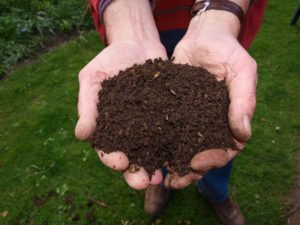 Eco-Goddess
Eco-Goddess
When I set up my own home, my family background and my study of Home Economics in school ensured that little was wasted.
I recycled, composted, re-used and tried to do my bit for the environment. However, there is no denying that the role of domestic eco-goddess requires effort. I battled with perfectionism in the beginning but learned that setting realistic goals was a surer path to success. Now I just do the best I can.
Environmental education through music and drama
My two main passions, music and inspiring people to care more for the planet, led to my ‘Environment the Musical’ Educational Resource.
Its aim is to educate children who then entertain audiences while presenting them with food for thought about littering, recycling, dog fouling and personal responsibility for the environment. It’s a great way to spread the message beyond the classroom into the wider community. After all, the environment is everyone’s responsibility.
The musical’s final act features a fashion show where characters model something they have created from rubbish. During the scene the actors address the audience with the line, “Rubbish! Is this rubbish? Rubbish might not be rubbish at all!” This is to challenge the audience’s assumption that single-use items like packaging should go straight in the bin. More about this later!
Much to learn
I was conscious of having lots to learn about caring for the planet but I admit to considering myself quite ‘green’. I sometimes felt just a little self-righteous as I proudly led by example. But even I was sometimes blind to the fact that stuff can have a life after its obvious purpose no longer applies.
In 2005 my husband Ciaran and I spent a week in Carcasonne in France, just outside the famous medieval citadel, La Cité.
On the Saturday morning we awakened to a hive of activity on the street below. On discovering that people were setting up stalls for the annual September flea market of La Trivalle, I thought I was in heaven.
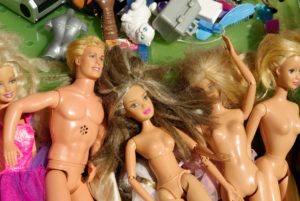 I raced out into the buzz, full of anticipation and determined to take full advantage of my good fortune. This was, after all, my first experience of a real flea market.
I raced out into the buzz, full of anticipation and determined to take full advantage of my good fortune. This was, after all, my first experience of a real flea market.
I returned thrilled with my beautiful €1 brooch, but slightly deflated and critical of the amount of ‘rubbish’ on display. I remarked to a bemused Ciaran, “I honestly cannot imagine who would be interested in buying headless fashion dolls or dolls with missing limbs.”
It would be several years later before I realised my great mistake and, ironically, a couple of years after I had written the line ‘Rubbish might not be rubbish at all’!
Wake-up moment
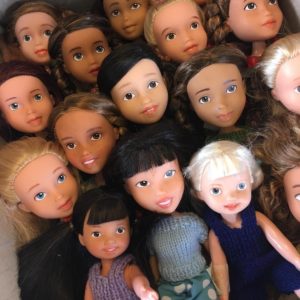
Sonia Singh’s Tree Change Dolls
My moment of enlightenment came in 2015 when I stumbled across Tree Change Dolls on Twitter.
Tree Change Dolls’ creator, Sonia Singh, creates beautiful unique dolls from used, discarded and broken fashion dolls. She removes the factory paint then re-paints the sweetest looking faces on the dolls, making them more like the young children who will play with them.
When I first read Sonia’s inspiring story I immediately recalled my comments in France all those years ago and I blushed at my ignorance, realising just how little ground I had covered on the eco highway. You can find out more here: https://treechangedolls.tumblr.com/about
One man’s rubbish is another man’s treasure
Tree Change Dolls are a perfect example of how one man’s rubbish is another man’s treasure. Even though something is old or broken, that doesn’t mean it’s now useless.
I came across another example in Elaine O’Regan’s article Bringing life back to Forgotten China in the Sunday Business Post. The article features Julie Swan of Forgotten China. Julie makes jewellery from second-hand ceramic tableware. From broken teacup to earrings, or from side plate to cuff links, Julie Swan’s work perfectly demonstrates the senselessness of our careless dumping of stuff.
http://www.forgottenchina.ie/the-story/
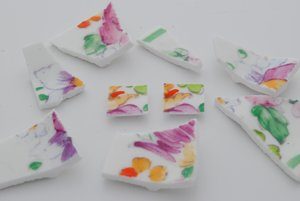
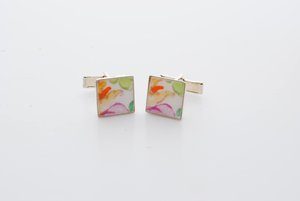
There are so many great examples of creative upcycling but I have to introduce you to Dublin-based Rothar (rothar is the Irish word for bicycle) and the positive ripple effect of their upcycling efforts on the environment. Rothar upcycle old bikes, taking them from seemingly fit for the scrap heap to ready to ride again. You can listen to Rothar’s founder Anne Bedos tell the story of this community bike shop in the video below- it’s truly inspiring!
Clearing out your rubbish
Lots of people have been inspired to turn ‘rubbish’ into something new: a piece of art, jewellery or something practical. Everything we use in our daily lives was created using the Earth’s limited resources. We should therefore try to avoid consigning things to the rubbish bin just because their obvious function no longer applies.
If you’re planning a clear-out, take your old toys, clothing and household items to charity shops or Recycling Centres. Better still, why not try a little upcycling yourself? After all, rubbish might not be rubbish at all!
